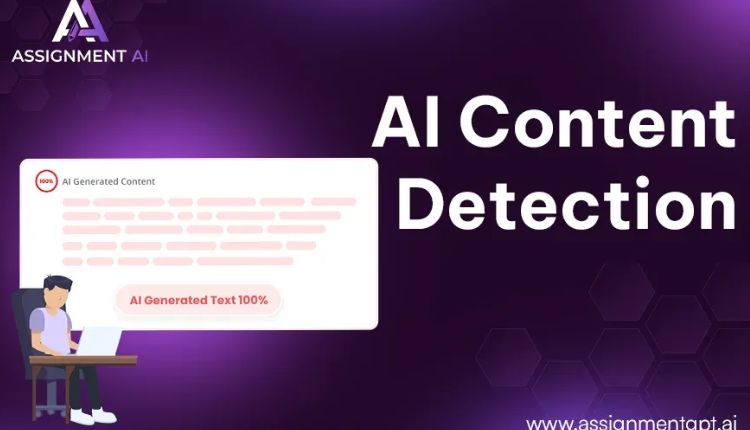Artificial intelligence is reshaping education, and nowhere is this more evident than in the tools being used to detect AI-generated content. With the rapid integration of AI writing assistants like ChatGPT, students have access to powerful writing aids—but this advancement also raises serious concerns about academic honesty and originality. To maintain integrity in classrooms, AI content detectors have quickly gained popularity among educators and institutions.
In this article, we’ll explore the growing role of AI content detectors, their benefits and limitations, and what both students and educators need to know in this evolving digital age.
What Are AI Content Detectors?
AI content detectors are specialized tools that analyze written text and determine whether it was created by a human or an AI system. These detectors use natural language processing (NLP), machine learning, and stylistic patterns to flag content that appears machine-generated.
For instance, AI-generated text often follows a predictable structure, lacks nuanced argumentation, or shows over-polished grammar. Detectors pick up on these subtle patterns to assign a probability score indicating the likelihood that AI wrote the content.
A prime example of such a tool is the AI Content Detector from EduWriter.ai, which helps students and teachers check whether a passage is likely generated by AI. It’s especially useful for promoting transparency in academic writing and preventing unintentional misuse of AI tools.
Why AI Content Detection Matters in Education
The rise of generative AI models like ChatGPT, Jasper, and others has sparked both excitement and anxiety in the academic community. Students can now get instant help on essays, assignments, and research papers—but this also opens the door to shortcuts that may undermine genuine learning.
For Educators:
AI detectors serve as a defense mechanism against academic dishonesty. When used responsibly, they can help uphold grading standards and ensure students are learning, not just submitting polished AI outputs. By analyzing student work through a reliable detector, educators can identify suspicious submissions and request further clarification or rewrites.
For Students:
Many students use AI tools to brainstorm or rephrase content, not to cheat. However, their work might still get flagged as AI-generated—resulting in confusion or even academic penalties. Using a detector like EduWriter.ai’s AI Content Detector before submission gives students peace of mind, ensuring their writing is original or appropriately humanized before it reaches their instructor.
How Accurate Are AI Content Detectors?
While AI content detectors are helpful, they’re not infallible. Accuracy can vary depending on the tool, the nature of the content, and the sophistication of the AI model used to write the text. Some detectors may return false positives, especially if a student writes in a formal or overly polished style.
This is why AI detectors should be used as a supporting tool, not the sole basis for making academic decisions. Educators are encouraged to use human judgment alongside detection results and to engage with students through dialogue when concerns arise.
For example, instructors can offer constructive feedback like the one shown in this sample academic response, focusing on improvement rather than punishment. This approach helps promote learning over fear.
Best Practices for Students Using AI Tools
AI writing tools can be incredibly helpful, but students must learn to use them responsibly. Here are a few best practices:
- Use AI for brainstorming, not writing entire essays. Let it help you generate ideas or structure your outline, but craft the main content yourself.
- Cite AI assistance when appropriate. Some schools now encourage transparency about the use of AI tools in assignments.
- Always review and rewrite. Rewriting AI-generated suggestions in your own words reduces the chances of detection while deepening your understanding.
- Run your work through an AI detector. Before submitting, check your work using a tool like EduWriter.ai’s detector to ensure it won’t get flagged.
- Practice academic integrity. Ultimately, your education is for your own benefit. Misusing AI cheats you out of growth and understanding.
Best Practices for Educators Using AI Detectors
Educators also have a responsibility to use AI detection tools ethically and constructively. Here are a few tips:
- Use AI detectors as indicators, not judges. Investigate further if a result is flagged—don’t rely solely on the detector.
- Be transparent with students. Let them know what tools you’re using and why. This encourages open communication and trust.
- Educate students on AI ethics. Teach them how to use AI tools responsibly and the value of originality in academic work.
- Focus on improvement, not punishment. If a student unintentionally submits flagged content, use it as a learning moment rather than immediate penalization.
The Future of AI in the Classroom
As AI technology evolves, so will the tools we use to manage its presence in education. The future may include smarter detectors integrated into learning management systems (LMS), AI writing assistants that offer real-time ethical guidance, and classrooms where students and teachers collaborate with AI rather than fear it.
By staying informed and adaptable, educators and students alike can benefit from AI without compromising academic standards.
Conclusion
AI content detectors are becoming a necessary part of modern education. With tools like the EduWriter.ai AI Content Detector, both students and educators have access to intelligent solutions for promoting transparency and originality in writing.
While these detectors are powerful, they are best used in combination with human judgment, open communication, and a shared commitment to learning. Whether you’re a student trying to avoid accidental plagiarism or an educator aiming to maintain academic integrity, understanding how these tools work is essential in today’s AI-driven academic landscape.






